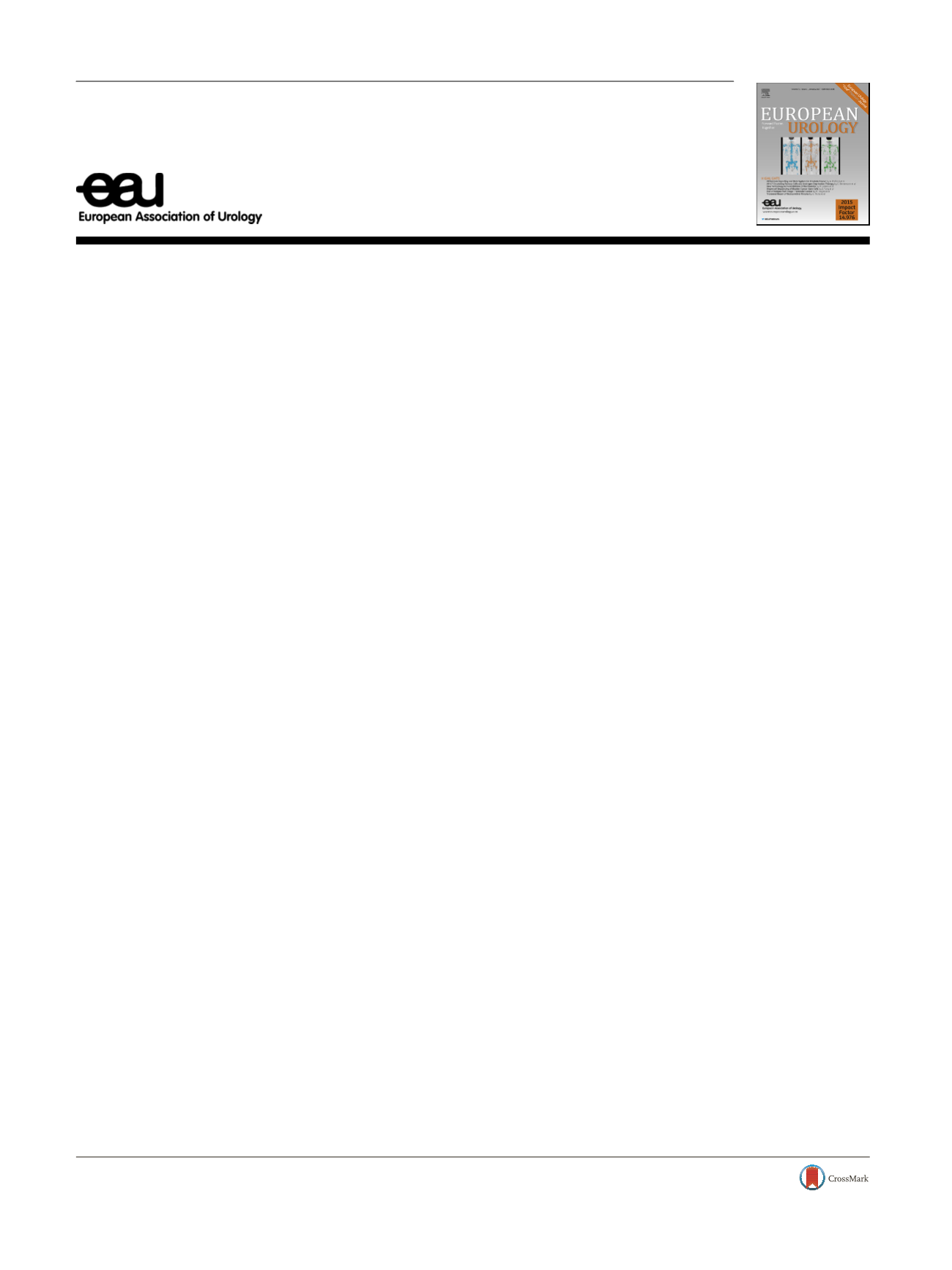

Platinum Priority – Editorial
Referring to the article published on pp. 689–709 of this issue
Post-prostatectomy Radiotherapy: Does ‘‘Salvage’’ Really Equal
‘‘Adjuvant’’?
Alberto Bossi
a , * ,Cesare Cozzarini
ba
Department of Radiation Oncology, Institut Gustave Roussy, Villejuif, France;
b
Department of Radiation Oncology, San Raffaele Scientific Institute, Milan,
Italy
The natural history of prostate cancer (PCa) following
radical prostatectomy (RP) has been the subject of several
analyses and extensively reported
[1,2]. It is evident that
40–50% of patients with (very) high-risk features at
pathology will experience a rise in prostate-specific antigen
(PSA) at 2–5 yr after RP. Not surprisingly, the increasing
proportion of patients with advanced disease who are
currently managed with RP
[3]will translate into a growing
number of men at higher risk of (biochemical) recurrence
after surgery. For these patients, all major guidelines
(including the collaborative guidelines from the European
Association of Urology and from the American Urological
Association) recommend consideration of a multimodal
post-RP approach including radiotherapy (RT) and/or
androgen deprivation therapy (ADT), even though the ideal
timing of RT after RP is still a matter of debate.
Consequently, controversy on the relative merits of adju-
vant RT (aRT; irradiation within a maximum of 6 mo after
surgery when high-risk features are detected at final
pathology with undetectable PSA) as opposed to salvage
RT (sRT; initial PSA observation post-RP and irradiation only
for rising PSA) is a hot topic and highly interesting in view of
the growing number of patients in the near future.
In this issue of
European Urology
, Gandaglia and co-
workers
[4]present a valuable review of the literature on
this issue, and are to be congratulated for the quality of their
work and the rigorous analysis of the existing evidence. Pros
and cons for aRT compared to sRT are thoroughly analysed
and evaluated. Clearly, the presence of an (isolated) positive
surgical margin or of (small) extracapsular extension at
final pathology per se should no longer be considered as
sufficient argument for systematic delivery of aRT, since this
emotionally motivated approach is likely to lead to
unacceptable and unjustifiable overtreatment in a majority
of patients. Thus, the central point of the debate is how to
identify the subset (if any) of post-RP patients who might
benefit the most from immediate aRT, thus avoiding
unnecessary irradiation, with its inherent avoidable burden
of side effects and pharmacoeconomic costs, among men
who will never experience rising PSA in their post-RP
follow-up or in whom a post-surgical PSA rise will never
translate into a life-threatening event. For a number of
reasons, all well analysed by Gandaglia et al, the available
randomised controlled trials (RCT) investigating the role of
aRT
[5–7]now only have historical value, and the
generalisability of their results is limited. By contrast,
several nonrandomised studies and case series have
generated some intriguing hypotheses that are also
discussed by the authors. First, it now seems possible to
delineate the profile of the subgroup of patients who might
benefit the most from adjuvant irradiation soon after RP;
indeed, aRT was invariably associated with a 10%
improvement in 10-yr cancer-specific survival in the
presence of seminal vesicle invasion, Gleason 8–10 disease,
or lymph node invasion at final pathology. When two or
more of these features are present, an expectant strategy,
with sRT offered only in the case of rising PSA, may
ultimately compromise the chance of cure
[8]. It should be
recognised that to date, only nonrandomised evidence
suggests a potential role for aRT, and mature results from
ongoing RCTs comparing aRT with sRT (RADICALS, RAVES,
and GETUG-17) are eagerly awaited. In this context, novel
E U R O P E A N U R O L O G Y 7 2 ( 2 0 1 7 ) 7 1 0 – 7 1 1available at
www.scienced irect.comjournal homepage:
www.europeanurology.comDOI of original article:
http://dx.doi.org/10.1016/j.eururo.2017.01.039.
* Corresponding author. Department of Radiation Oncology, Institut Gustave Roussy, 114 rue E Vaillant, 94805 Villejuif, France. Tel. +33 1 42114413;
Fax: +33 1 42115283.
E-mail address:
alberto.bossi@igr.fr(A. Bossi).
http://dx.doi.org/10.1016/j.eururo.2017.06.0030302-2838/
#
2017 European Association of Urology. Published by Elsevier B.V. All rights reserved.
















